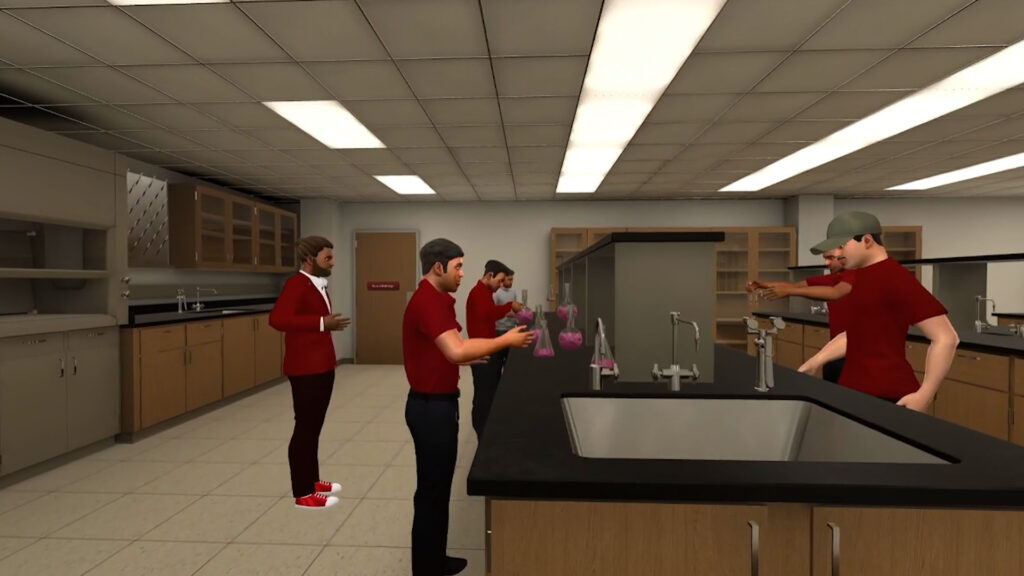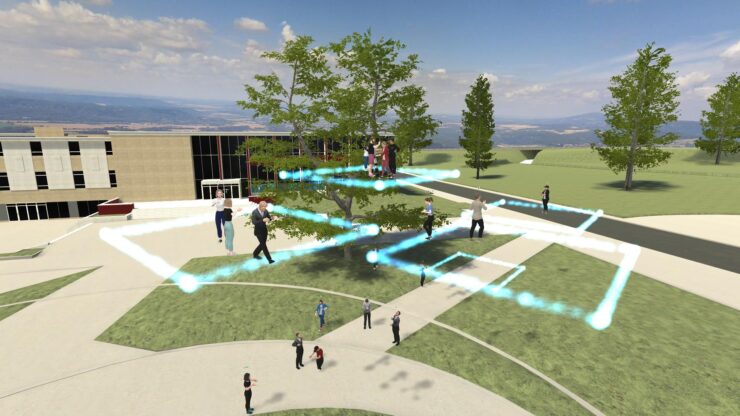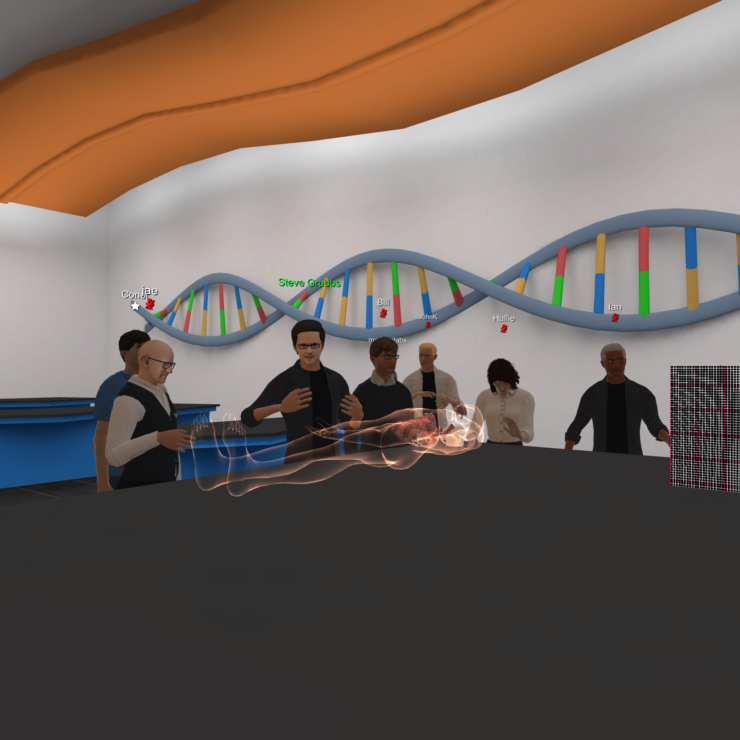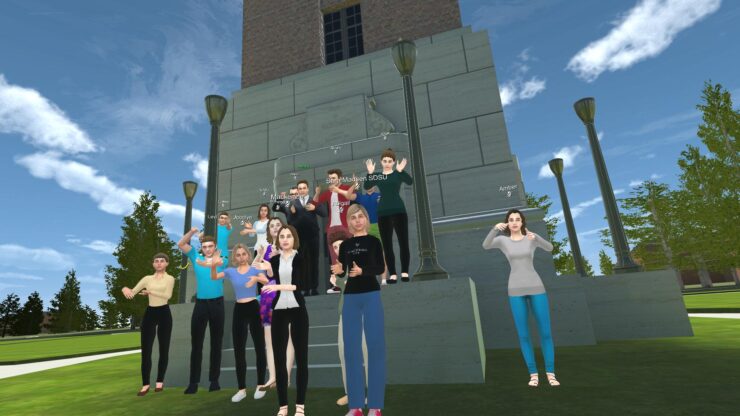by Steve Grubbs, VictoryXR.
Aristotle sat on a rock just outside of Athens, where I found him ready to strike up a conversation. I had been fortunate to catch a ride through time to have a conversation, and perhaps, to quibble a bit about his disagreements with Plato.
As I sat down, I marveled at having the good fortune to live during this moment in time when an average individual like myself can have a live conversation with a famous person from history brought back to life through artificial intelligence.
As we discussed Aristotle’s theory of syllogisms, I wandered a bit from philosophy and theoretical math and asked him about Athens during the age in which he lived. The conversation flowed naturally and for a time, I forgot that I was having a conversation with an avatar, driven by conversational artificial intelligence…and I forgot I lived in 2023.

When I speak to groups trying to understand what it is that we do, I always start by telling them that students should be learning in both worlds. Rather than limiting students to learning only in an atom-based world, they now have the luxury to gain knowledge in an immersive, 3-D world that is full of other students and teachers. They call it a synchronous environment, but what that really means is that it is a multiplayer experience.
Immersive 3D worlds are also known as a metaverse or metaversity. More than anything, this provides students an opportunity for students to learn in ways never before possible, bringing a level of understanding beyond traditional methods.

Just as the transition to calculators turned out to be inevitable, the march toward immersive 3D learning, complemented by artificial intelligence is also inevitable. As such, the real question is not whether we embrace it, but instead, how do we maximize its usefulness so that all students benefit with a higher level of learning and understanding. Toward that end, I have two suggestions.
First, you should know upfront that I am the co-founder and CEO of VictoryXR, a company that specializes in building metaversities. My father was a school teacher in a public middle school and I also served four years as chair of the House Education Committee in the Iowa Legislature. This topic is important to me.
The first key to a useful metaverse education is the use of simulators. In 2009, Captain Sullenberger was forced to make an emergency landing in the Hudson River in New York after a flock of Canadian Geese flew into both engines causing almost immediate engine failure. Sully had not learned how to manage that type of emergency landing in real life, but instead through a traditional simulator. When learning on machines that have high consequences for failure, it’s important to give students the ability to fail without actually harming another person. Metaverse schools allow students this opportunity. For example, nursing students may now work on complicated machines in real-world situations. Take for example a patient complaining of chest pain and numbness in their arm. Reading the results of the machine correctly is not just important, it may very well mean the difference between life and death.Through the technology of simulators in a metaverse, access to this technology becomes available at a small fraction of the cost of traditional simulators. Today, a student will work with machine simulators with an instructor by their side. Later, they can enter the metaverse emergency room on their own and practice over and over again until they have it right.
Simulators will be useful in many ways. Consider incarcerated youth who have a 90% recidivism rate (meaning more people are hurt as they return to jail as adults). Through the power of simulator career training, the young prisoners can learn welding and wood working without ever having to touch the actual tools. As you can guess, it’s not high on the warden’s list to give incarcerated youth access to sharp tools. The same can be said for robotics, drones, patient care, veterinary training and thousands of other simulated learning. These skills can lead to a job, post-prison, and a chance at a normal life. Even more, innocent lives will be protected because a portion of the incarcerated youth did not return to a life of crime.
Beyond simulators, conversational artificial intelligence is also an important aspect of a learning metaverse. Whether it’s having a conversation with aristotle, or talking with a patient having heart pain, the ability to have real-time talk with an avatar opens up possibilities never before dreamed of. And to be clear, we are not talking about ‘if-then’ programming. This is not software that tells the avatar to respond in a specific way when asked a question. Instead, this uses artificial intelligence where the avatar is ‘thinking’ using large language models. Any question that is asked will cause the avatar to pause, think and respond, just as humans do. Think back to the character, Data, in Star Trek. He was a synthetic human, given an artificial intelligence brain which allowed him to seem almost human.

As schools adopt immersive 3D learning, we will see their usefulness exponentially increase with the introduction of simulators and conversational AI avatars. Students will benefit from a greater understanding of complex concepts and have a great deal of fun getting there. And, they may even be a bit more philosophical after a trip to ancient Greece.

Author
Steve Grubbs, CEO and co-founder of VictoryXR

















